A Complete Guide to Visiting the Mausoleum of Emperor Qin Shi Huang

An Essential Guide to Visiting Mausoleum Of Emperor Qin Shi Huang
In This Guide
- An Essential Guide to Visiting Mausoleum Of Emperor Qin Shi Huang
- The Rich History and Legends of Mausoleum Of Emperor Qin Shi Huang
- Main Highlights: What You Absolutely Can’t Miss
- Planning Your Visit: A Practical Guide
- Tickets: Prices, Booking, and Tips
- How to Get There: A Complete Transportation Guide
- Local Cuisine and Accommodation Nearby
- Frequently Asked Questions
- Final Thoughts on Your Trip
The Mausoleum of Emperor Qin Shi Huang, nestled at the foot of the Lishan Mountain near Xi’an, is not merely a tomb; it is a monumental testament to the grand ambition of China’s first emperor, who united a fractured land in 221 BCE. This UNESCO World Heritage Site, discovered in 1974, harbors a treasure of historical significance, including the world-renowned Terracotta Army—thousands of life-sized figures crafted with exquisite detail, each distinct in expression and attire.
As you step into this sprawling archaeological wonder, prepare to be transported back to a time when the Qin Dynasty wielded unmatched power, shaping the very foundations of Chinese civilization. The mausoleum itself, with its impressive grave mound and intricate layout mirroring the ancient capital of Xianyang, invites you to explore the depths of a past that influenced millennia of history.
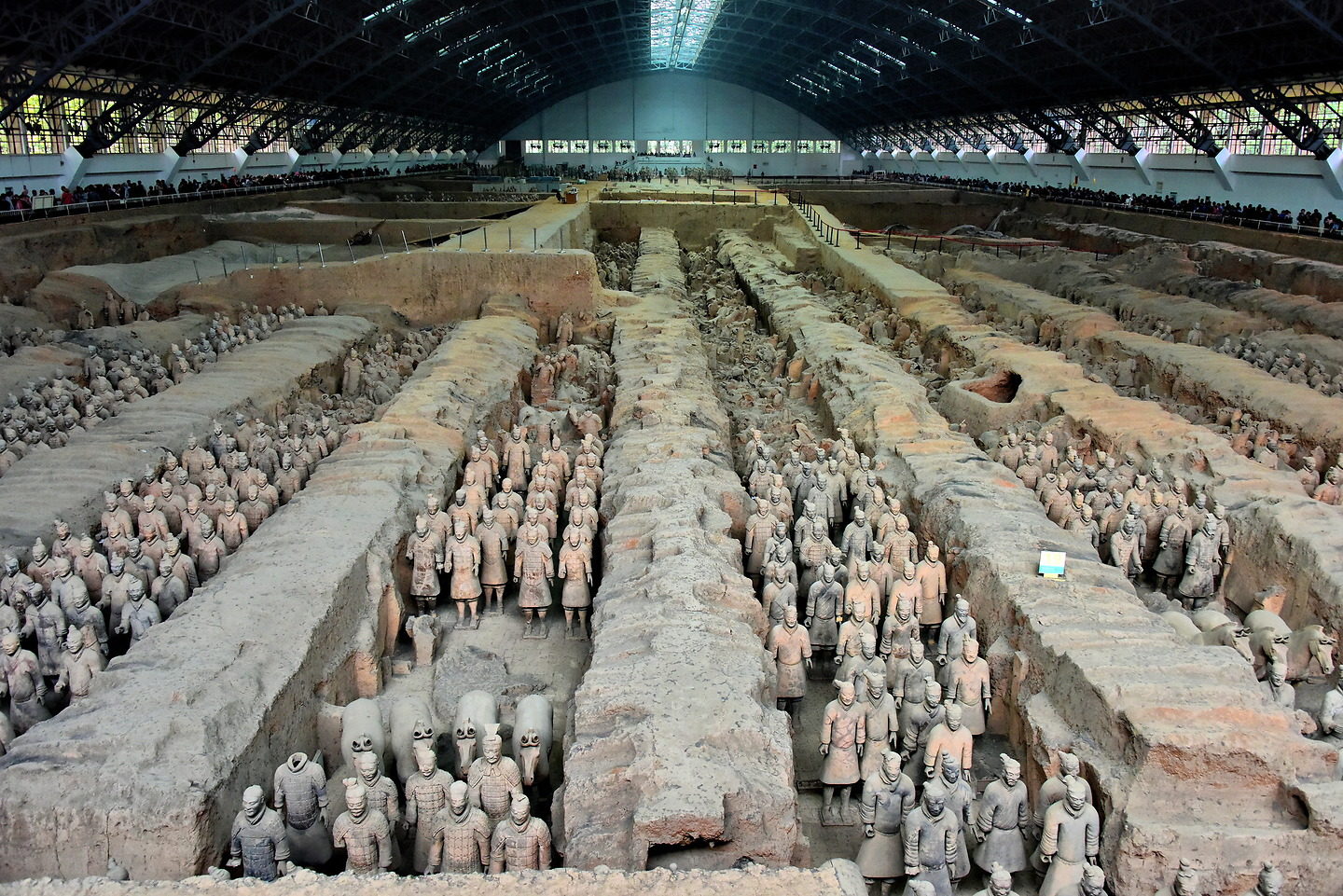
Mausoleum_Of_Emperor_Qin_Shi_Huang.
Whether you are a history buff or simply curious about the cultural legacy of China, visiting this site offers an unparalleled glimpse into an era marked by ambition, artistry, and architectural innovation. Here, amidst the echoes of history, you will witness the awe-inspiring fusion of artistry and engineering that has captivated the world for centuries. Join us as we delve into the essential experiences and insights that will enhance your visit to the Mausoleum of Emperor Qin Shi Huang.
The Rich History and Legends of Mausoleum Of Emperor Qin Shi Huang
The Mausoleum of Emperor Qin Shi Huang, a UNESCO World Heritage site, is more than just a burial ground; it is a testament to the ambition and legacy of China’s first emperor. Nestled at the northern foot of Lishan Mountain, this monumental site is shrouded in rich history and captivating legends that continue to intrigue visitors from around the globe.
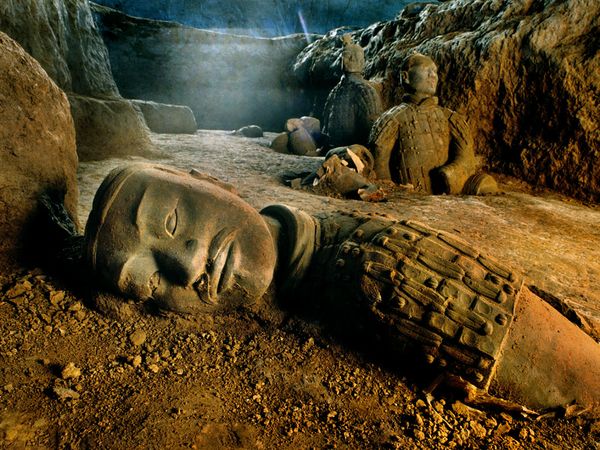
Mausoleum_Of_Emperor_Qin_Shi_Huang.
The Historical Significance
The First Emperor and His Vision
Qin Shi Huang, originally named Ying Zheng, ascended to the throne of the Qin state at just 13 years old. By 221 BCE, he successfully unified the various warring states into what is recognized as the first centralized empire in Chinese history. His reign was marked by sweeping reforms, including the standardization of weights, measures, currency, and even the script, which laid the groundwork for a unified Chinese identity.
Construction of the Mausoleum
The mausoleum complex began construction in 246 BCE and continued for 38 years, involving the labor of hundreds of thousands of workers. Historians suggest that the site encompasses more than just the emperor’s tomb; it was designed as a microcosm of the capital city of Xianyang, reflecting the grandeur and meticulous planning characteristic of the Qin Dynasty. Today, it spans approximately 56.25 square kilometers and features nearly 200 burial pits containing thousands of life-sized terra cotta soldiers, horses, and chariots.
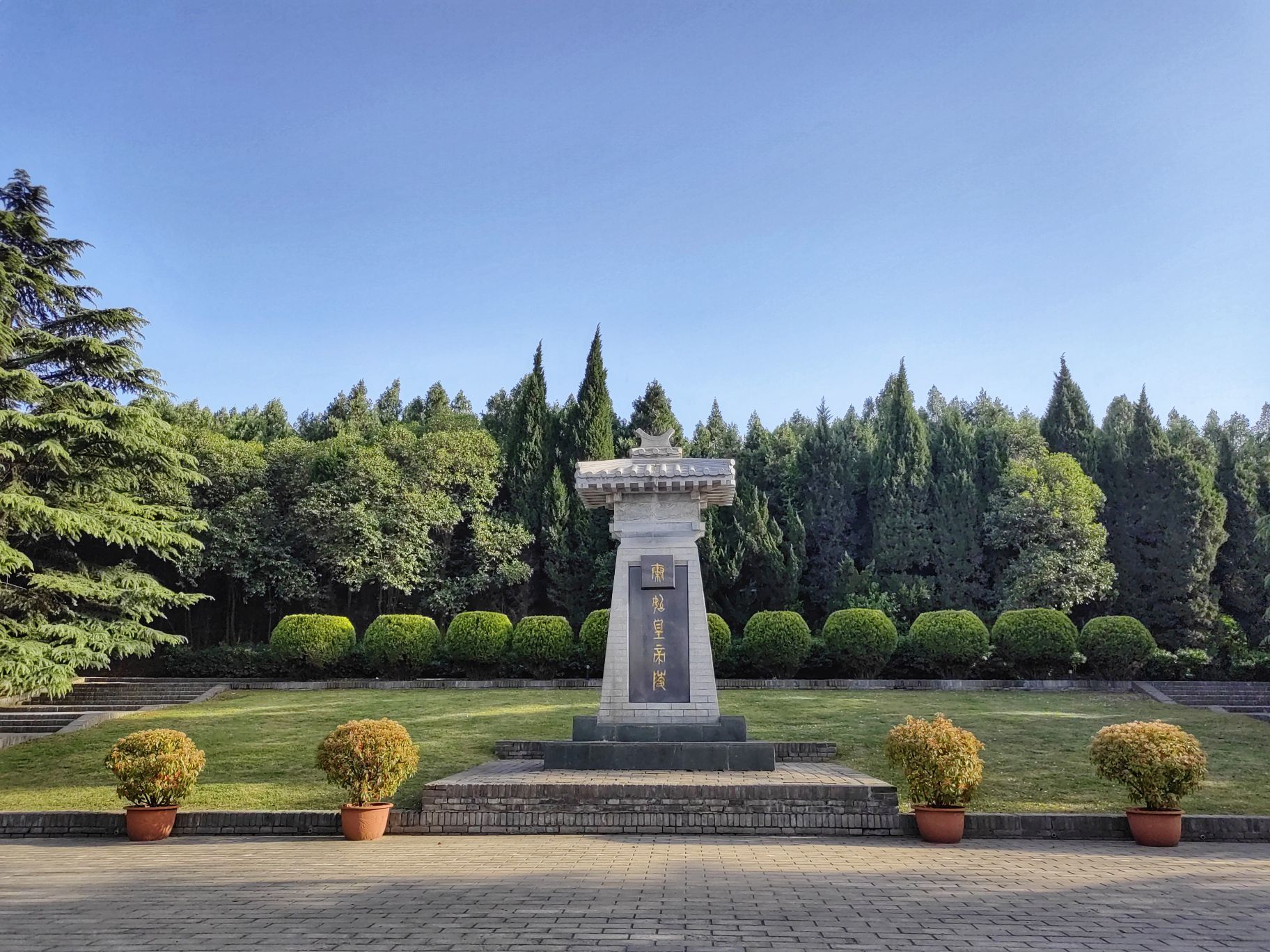
Mausoleum_Of_Emperor_Qin_Shi_Huang.
Legends Surrounding the Tomb
The Subterranean Palace
One of the most enduring legends associated with the mausoleum is that of the underground palace. Ancient texts, notably those of historian Sima Qian, suggest that Qin Shi Huang’s tomb is not merely a burial site but a grand subterranean palace filled with treasures. According to legend, the emperor had ordered the creation of a model of the empire, complete with rivers of mercury and stars made of precious stones, to ensure his comfort in the afterlife. While exploration of the tomb has been limited due to concerns over preservation, this enduring myth captures the imagination of many who visit.
The Terracotta Army: Guardians of the Afterlife
The terracotta warriors, discovered in 1974 by local farmers, are perhaps the most iconic symbols of this mausoleum. Each figure is unique, reflecting the diversity of the emperor’s army. Legends suggest that these warriors were crafted to protect Qin Shi Huang in the afterlife, serving as a formidable guard against any threats. The meticulous details, from the soldiers’ expressions to their intricate armor, reveal the artistry and technical prowess of ancient Chinese craftsmen.
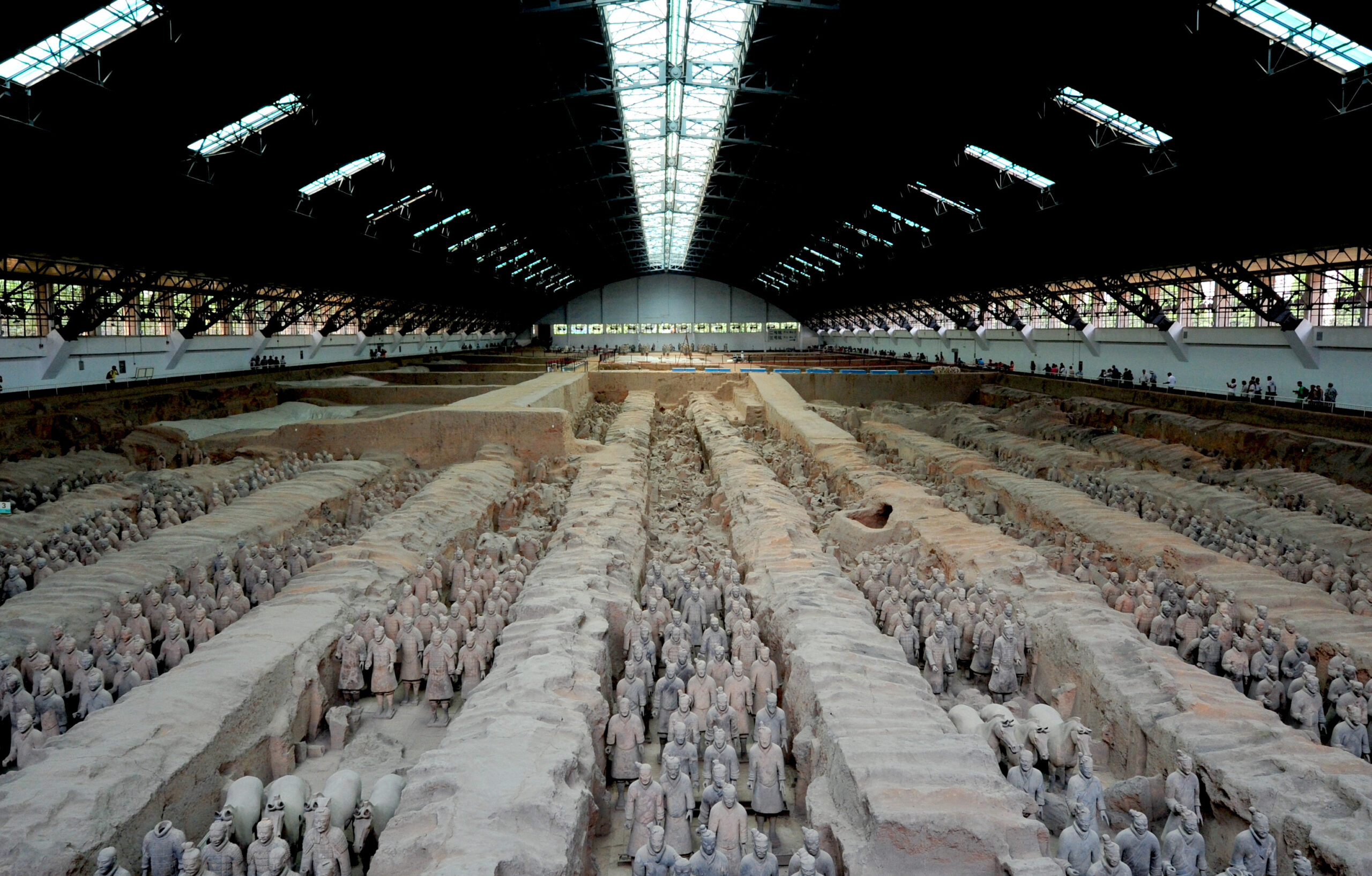
Mausoleum_Of_Emperor_Qin_Shi_Huang.
Cultural Legacy
The mausoleum not only serves as a reminder of Qin Shi Huang’s historical significance but also has influenced Chinese culture profoundly. The emperor’s quest for immortality, depicted through the elaborate construction of his tomb and the terracotta army, symbolizes humanity’s eternal struggle against mortality.
In contemporary times, the site has become a focal point for cultural tourism, drawing millions of visitors each year who come to witness the awe-inspiring remnants of a bygone era. The blend of history and legend surrounding the Mausoleum of Emperor Qin Shi Huang continues to inspire stories, films, and scholarly research, ensuring that the legacy of China’s first emperor remains vibrant and relevant.

Mausoleum_Of_Emperor_Qin_Shi_Huang.
Visiting the Site
Travelers to the Mausoleum will find more than just historical artifacts; they will encounter a narrative woven through centuries of Chinese history. Guided tours often delve into the stories behind the terracotta figures and the emperor’s ambitions, offering a rich and immersive experience. To truly appreciate the magnitude of this site, one must consider not only the artistry and engineering but also the profound impact it has had on the cultural landscape of China and the world.
In sum, the Mausoleum of Emperor Qin Shi Huang stands as a monumental achievement of human endeavor, a site where history intertwines with legend, inviting all who visit to reflect on the enduring legacy of China’s first emperor.
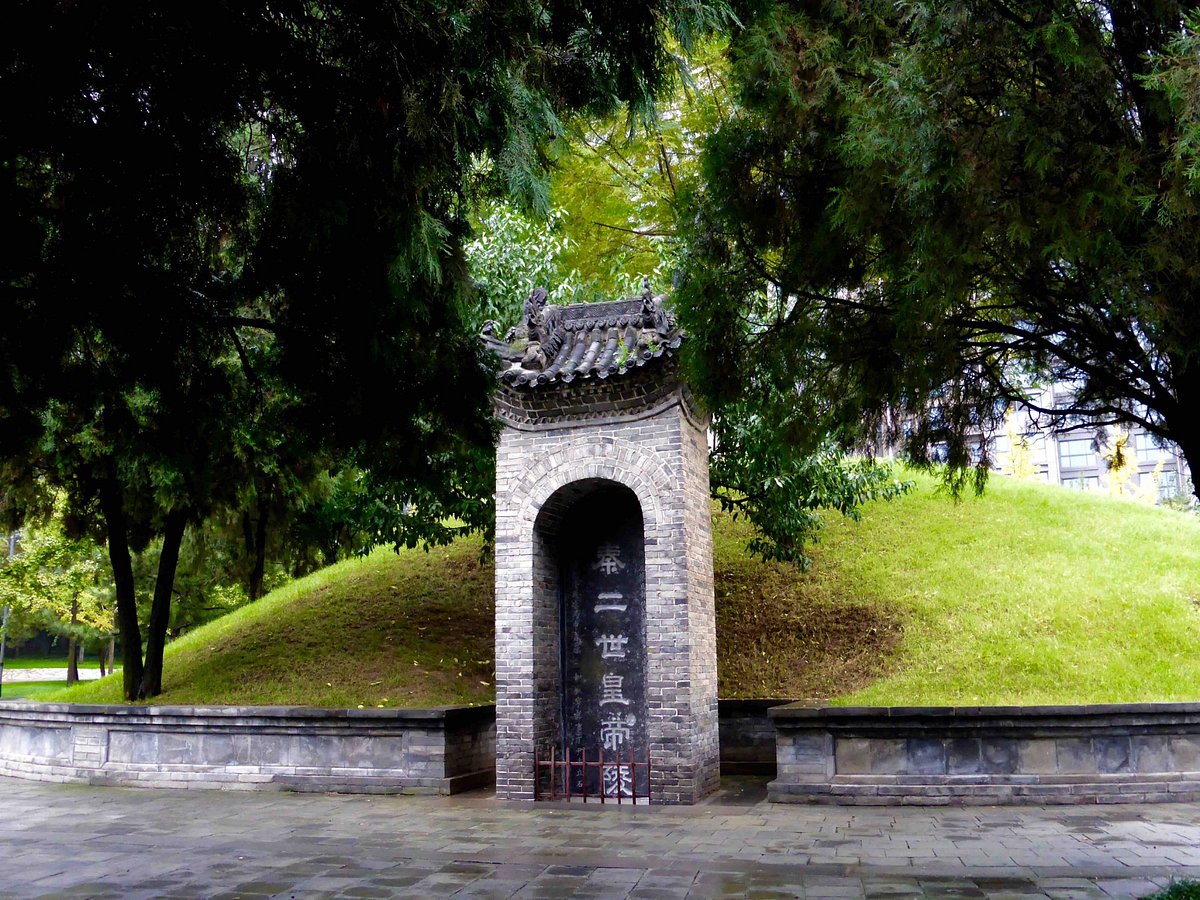
Mausoleum_Of_Emperor_Qin_Shi_Huang.
Main Highlights: What You Absolutely Can’t Miss
Unraveling the Wonders of the Mausoleum of Emperor Qin Shi Huang
Visiting the Mausoleum of Emperor Qin Shi Huang is a journey into the depths of Chinese history, offering a glimpse into the grandeur of an ancient civilization. Here are the main highlights that you simply cannot miss:
1. The Terracotta Army
At the heart of this archaeological marvel lies the Terracotta Army, discovered in 1974. This collection of over 8,000 life-sized statues of soldiers, horses, and chariots was created to accompany Qin Shi Huang in the afterlife. Each figure is unique, showcasing remarkable artistry and attention to detail, from the warriors’ armor to the horses’ bridles. The sheer scale and realism of these statues provide profound insights into the military organization of ancient China.
2. The Main Tomb
The actual burial site of Emperor Qin Shi Huang is a mysterious mound located within the mausoleum complex. While the tomb itself remains unopened, historical accounts suggest it is surrounded by a subterranean city, possibly adorned with treasures and intricate designs. This tomb reflects the grandeur of the first emperor’s vision for an eternal resting place, echoing the architectural layout of his capital, Xianyang.
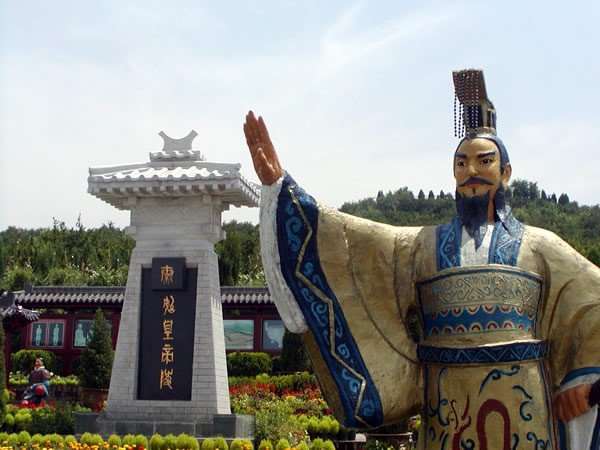
Mausoleum_Of_Emperor_Qin_Shi_Huang.
3. Accompanying Pits
Beyond the main Terracotta Army, there are additional pits containing bronze chariots, weapons, and other burial artifacts. Notably, Pit 2 features a variety of military formations that showcase the strategic prowess of the Qin military. Exploring these pits offers an understanding of the funerary customs and the technological advancements of the time.
4. The Layout of the Mausoleum
The entire mausoleum complex spans over 56 square kilometers and is meticulously designed to mirror the urban planning of the capital. The layout includes walls, roads, and various structures that reflect the power and sophistication of the Qin Dynasty. Walking through the site, you can appreciate how Qin Shi Huang aimed to replicate his earthly kingdom in the afterlife.
5. Cultural Significance
The mausoleum is not just a burial site; it is a testament to the unification of China under Qin Shi Huang in 221 BCE. This monumental site symbolizes the birth of a centralized Chinese state and showcases the artistic and cultural achievements of the era. The intricate sculptures and burial practices provide invaluable insights into ancient Chinese beliefs about life, death, and the afterlife.
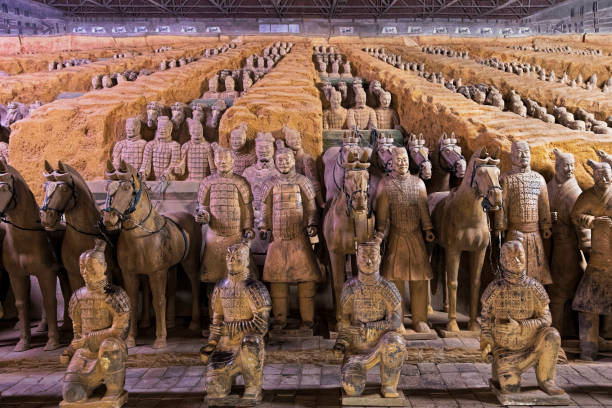
Mausoleum_Of_Emperor_Qin_Shi_Huang.
6. The Museum of the Terracotta Warriors and Horses
Adjacent to the mausoleum, this museum houses many of the unearthed artifacts and offers exhibitions that delve deeper into the history and significance of the Terracotta Army. Visitors can explore detailed displays that explain the excavation process, the significance of the artifacts, and the ongoing preservation efforts.
7. Guided Tours and Interpretations
To fully appreciate the depth of the site, consider joining a guided tour. Knowledgeable guides provide fascinating narratives about the history of the Qin Dynasty, the construction of the mausoleum, and the stories behind its many artifacts. Their insights enrich the experience, bringing the ancient world to life.
8. Photography Opportunities
The mausoleum and its surrounding landscapes offer breathtaking views. Capture the grandeur of the Terracotta Army and the serene beauty of the mountainous backdrop. Remember to check photography regulations, as some areas may have restrictions.
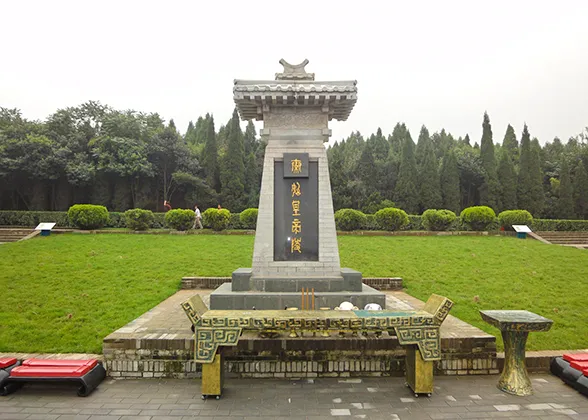
Mausoleum_Of_Emperor_Qin_Shi_Huang.
9. Visitor Facilities
Ensure a comfortable visit by utilizing the facilities available at the site. There are information centers, rest areas, and food options nearby, allowing you to take a break and reflect on the wonders you’ve encountered.
10. Respect for Heritage
As you explore this UNESCO World Heritage Site, remember to respect the cultural significance of the mausoleum. Follow guidelines, keep the area clean, and appreciate the historical narratives that this site embodies.
Conclusion
The Mausoleum of Emperor Qin Shi Huang is a captivating blend of history, art, and culture. Each highlight offers a unique perspective on ancient China, making your visit an unforgettable experience that resonates long after you leave.

Mausoleum_Of_Emperor_Qin_Shi_Huang.
Planning Your Visit: A Practical Guide
Visiting the Mausoleum of Emperor Qin Shi Huang is an unforgettable journey into the heart of Chinese history, offering a glimpse of the grandeur of ancient civilization. As you prepare for your visit, this guide will help you navigate logistics, enhance your experience, and appreciate this UNESCO World Heritage site to the fullest.
Getting There
Location:
The Mausoleum is located about 35 kilometers (22 miles) northeast of Xi’an, in Shaanxi Province. The site is easily accessible from the city, making it a popular day trip for visitors.
Transport Options:
– By Public Transport: Buses 5 and 914 depart regularly from Xi’an Railway Station and the city center, delivering you directly to the site.
– By Taxi or Ride-Hailing Services: A taxi ride from Xi’an to the mausoleum takes approximately 1 hour, costing around 100-150 RMB depending on traffic.
– Guided Tours: Numerous tour operators in Xi’an offer guided tours that include transportation, making it convenient to visit multiple historical sites in one day.
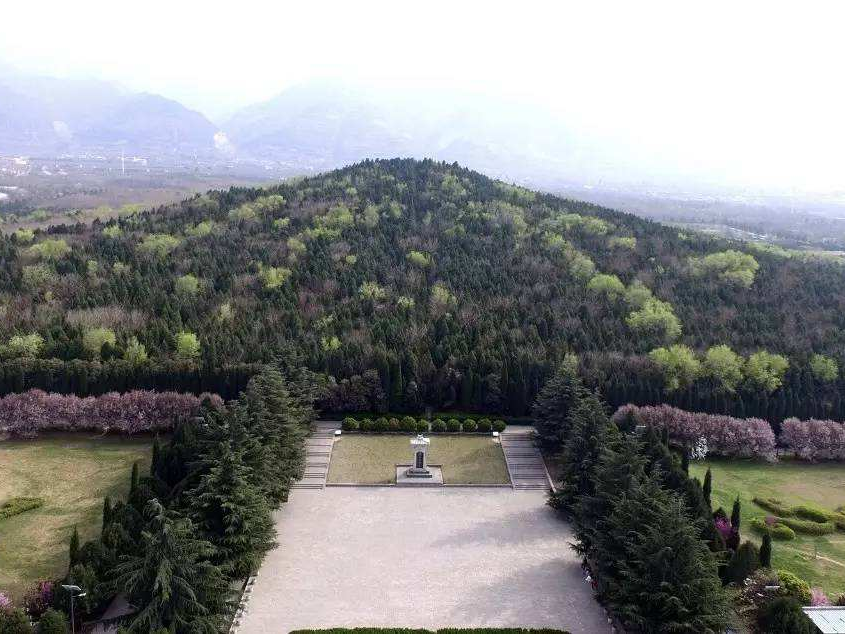
Mausoleum_Of_Emperor_Qin_Shi_Huang.
Admission Information
Opening Hours:
– April to October: 8:30 AM to 5:30 PM
– November to March: 8:30 AM to 5:00 PM
Tickets:
– General Admission: Approximately 150 RMB, which includes access to the main mausoleum complex and the Terracotta Army museum.
– Discounts: Reduced rates are available for students and seniors, so be sure to bring identification for verification.

Mausoleum_Of_Emperor_Qin_Shi_Huang.
What to Expect
Terracotta Army:
The highlight of your visit will undoubtedly be the Terracotta Army, discovered in 1974. This astounding collection consists of thousands of life-sized statues of soldiers, horses, and chariots, each uniquely crafted, showcasing the artistic mastery of the era.
Mausoleum Complex:
The mausoleum itself, a grand burial mound, stands at 51.3 meters (168 feet) tall and is surrounded by various pits containing additional artifacts. Take time to explore the surrounding area, which mirrors the layout of the ancient city of Xianyang, where Qin Shi Huang ruled.
Tips for Your Visit
- Dress Comfortably: Wear comfortable shoes as you may be walking quite a bit. The site is expansive, and you’ll want to explore thoroughly.
- Guided Tours: Consider hiring a local guide or joining a tour group to gain deeper insights into the history and significance of the site.
- Photography: Capture the memories, but be respectful of any signs indicating where photography is not permitted.
- Timing Your Visit: Try to arrive early in the day or late in the afternoon to avoid the crowds, especially during peak tourist seasons.
Nearby Attractions
Once you’ve soaked in the history of Qin Shi Huang’s mausoleum, consider visiting these nearby attractions:
– Huaqing Hot Springs: Just a short drive away, this ancient royal retreat features beautiful gardens and historic baths.
– Mount Li: A stunning mountain range offering hiking trails and breathtaking views of the region.
– Xi’an City Wall: A well-preserved landmark that provides insight into the city’s history and fantastic views of the skyline.
Cultural Etiquette
Engaging with local customs can greatly enhance your experience:
– Respect the Site: Remain mindful of the preservation efforts in place; avoid touching artifacts and follow all site regulations.
– Learn Basic Mandarin Phrases: A few words of Mandarin can go a long way in making connections with locals and enhancing your experience.
Conclusion
The Mausoleum of Emperor Qin Shi Huang is not just a testament to the emperor’s power but also a reflection of China’s rich history and culture. By planning your visit carefully, you can ensure a rewarding experience that will leave you with lasting memories of one of the world’s most significant archaeological sites. Enjoy your journey into the past!
Tickets: Prices, Booking, and Tips
When planning your visit to the Mausoleum of Emperor Qin Shi Huang, it’s essential to be well-informed about ticket prices, booking options, and useful tips to enhance your experience at this UNESCO World Heritage site.
Ticket Prices
As of 2023, the ticket prices for visiting the Mausoleum of Emperor Qin Shi Huang are generally as follows:
- General Admission: Approximately ¥150 (Chinese Yuan) per person.
- Student Discount: Students with valid ID may receive a discounted rate of about ¥75.
- Children: Admission is typically free for children under a certain height (often 1.4 meters), but this can vary, so it’s best to check in advance.
Note: Prices are subject to change, so it’s advisable to check the official website or local sources for the most current pricing before your visit.
Booking Options
Tickets can be purchased through various means:
- Online Booking:
- You can buy tickets online through the official website or specialized travel platforms. This is recommended, especially during peak tourist seasons, to avoid long queues.
-
Ensure that you have a printed copy or a digital version of your ticket ready for entry.
-
On-Site Purchase:
-
Tickets are also available at the entrance of the mausoleum. However, be prepared for potential wait times, particularly during weekends and holidays.
-
Guided Tours:
- Consider booking a guided tour, which often includes admission tickets. This option can provide deeper insights into the history and significance of the site.
Tips for a Memorable Visit
- Plan Your Visit:
-
Aim to arrive early in the day to enjoy the site with fewer crowds and to have ample time to explore the various pits and exhibits.
-
Dress Comfortably:
-
Wear comfortable shoes as you will be walking a lot. The site covers a vast area with many archaeological pits to explore.
-
Language Considerations:
-
Consider downloading a translation app or bringing a guidebook. While many staff members speak some English, not all informational signs are in English.
-
Photography:
-
Photography is allowed in many areas, but be respectful of any restrictions, particularly in specific exhibits or sacred sites.
-
Weather Preparedness:
-
Check the weather forecast before your visit. The site is mostly outdoors, so be prepared for sun or rain accordingly.
-
Explore Nearby Attractions:
- After visiting the mausoleum, consider exploring nearby attractions like the Terracotta Army Museum, which showcases the famous life-sized terracotta soldiers, and the Lintong Museum for a broader context of the Qin Dynasty.
By preparing well and understanding the ticketing process, you can fully immerse yourself in the incredible history and culture of one of China’s most significant archaeological sites. Enjoy your journey through time at the Mausoleum of Emperor Qin Shi Huang!
How to Get There: A Complete Transportation Guide
Navigating to the Mausoleum of Emperor Qin Shi Huang
The Mausoleum of Emperor Qin Shi Huang, a UNESCO World Heritage Site, is one of China’s most significant archaeological treasures. Located approximately 35 kilometers northeast of Xi’an in Shaanxi Province, this awe-inspiring site is easily accessible through various modes of transportation. Whether you are embarking on a historical pilgrimage or an adventurous exploration of ancient Chinese culture, here’s a comprehensive guide to help you reach this monumental site efficiently.
By Air
Xi’an Xianyang International Airport (XIY)
– Distance to Site: About 50 km (31 miles) from the mausoleum.
– Getting There: After landing, you can take a taxi or book a ride-sharing service to reach the mausoleum directly. The journey typically takes around 1 hour, depending on traffic conditions. Alternatively, airport shuttle buses are available, though they may require a transfer to local transport.
By Train
High-Speed Train to Xi’an
– From Major Cities: If you are coming from cities like Beijing, Shanghai, or Chengdu, take a high-speed train to Xi’an North Railway Station.
– Transfer to Local Transport: Upon arrival, you can either opt for a taxi or use public transport. The local buses and taxis from Xi’an North Railway Station can take you to the mausoleum in approximately 1 to 1.5 hours.
By Bus
Long-Distance Buses
– From Xi’an City Center: Regular buses run from various bus stations in Xi’an (such as Xi’an Railway Station or the Xincheng Bus Station) to the Lintong District, where the mausoleum is located.
– Travel Time: The bus journey takes around 1.5 to 2 hours. Ensure you check the schedule in advance, as the frequency may vary.
By Car
Driving Directions
– From Xi’an: If you choose to drive, take G108 from Xi’an, which leads directly to the Lintong District. Look for signs indicating the mausoleum, which is well-marked.
– Parking: There are designated parking areas near the entrance of the mausoleum complex, providing convenient access for visitors.
Local Transport Options
Within Lintong District
– Taxis and Ride-Sharing Services: Once in Lintong, taxis are readily available, and ride-sharing services operate in the area.
– Bicycles and Electric Scooters: For the more adventurous traveler, renting a bicycle or electric scooter can provide a unique way to explore the area around the mausoleum and enjoy the scenic views.
Tips for Visiting
- Opening Hours: The mausoleum complex typically opens from 8:30 AM to 5:30 PM, with extended hours during peak seasons. It’s advisable to check for any changes before your visit.
- Tickets: Purchasing tickets in advance is recommended, especially during holidays and weekends, to avoid long queues.
- Guided Tours: Consider joining a guided tour to enrich your experience with expert insights into the history and significance of the site.
In conclusion, reaching the Mausoleum of Emperor Qin Shi Huang is not only straightforward but also part of the journey into one of the most pivotal chapters of Chinese history. Whether you choose to fly, take a train, or drive, the adventure promises to be as enriching as the destination itself.
Local Cuisine and Accommodation Nearby
Discovering Local Flavors and Comfortable Stays Near the Mausoleum of Emperor Qin Shi Huang
Visiting the Mausoleum of Emperor Qin Shi Huang is not just about exploring the rich history encapsulated within the terracotta warriors; it’s also an opportunity to savor the local cuisine and find a cozy place to stay. Xi’an, located just a short drive away, is renowned for its culinary delights, while the surrounding areas offer a range of accommodation options to suit various travelers.
Local Cuisine to Savor
When in Xi’an, you simply cannot miss the chance to indulge in some of its signature dishes:
-
Biang Biang Noodles (油条面): Known for their wide, hand-pulled noodles, this dish is a local favorite. Often served with a spicy sauce and topped with fresh vegetables, it’s a hearty meal that reflects the region’s culinary traditions.
-
Rou Jia Mo (肉夹馍): Sometimes referred to as a “Chinese hamburger,” this dish consists of a flavorful stewed meat (often pork or beef) packed inside a freshly baked flatbread. It’s a perfect snack for a busy day of exploration.
-
Yangrou Paomo (羊肉泡馍): A comforting dish made from lamb stew and crumbled bread, this meal embodies the spirit of Xi’an’s food culture. Traditionally enjoyed with a side of pickled garlic and chili oil, it’s a must-try for any visitor.
-
Sour and Spicy Noodles (酸辣面): These noodles offer a delightful balance of tangy and spicy flavors, making them a popular choice among locals and tourists alike.
-
Pomegranate Juice (石榴汁): Xi’an is famous for its pomegranates, so don’t miss the chance to taste the fresh juice. It’s refreshing and packed with nutrients, perfect for recharging after a day of sightseeing.
Where to Stay
There are several accommodation options near the Mausoleum, catering to different preferences and budgets:
- Luxury Options:
-
Hilton Xi’an: Located in the heart of the city, this hotel offers a blend of modern comfort and traditional Chinese hospitality. Enjoy luxurious amenities, on-site dining, and a convenient location that makes it easy to explore Xi’an.
-
Sofitel Legend People’s Grand Hotel Xi’an: This five-star hotel provides an elegant experience with beautifully designed rooms and exceptional dining options. It’s a perfect base for exploring the historical sites nearby.
-
Mid-Range Choices:
-
Grand Noble Hotel Xi’an: A well-appointed hotel that combines comfort with affordability. It features a range of amenities, including a restaurant serving local dishes and a spa for relaxation after a day of adventure.
-
Xi’an Hotel: This hotel offers a good balance of price and comfort, with easy access to public transport and local attractions. The on-site restaurant serves a variety of local and international cuisine.
-
Budget-Friendly Stays:
-
Hanting Express Xi’an Xidajie: A budget option that provides clean and comfortable rooms, making it a great choice for travelers who want to save on accommodation without sacrificing quality.
-
Hostel options: For those looking to meet fellow travelers, hostels like Xi’an Travelling With Hostel offer dormitory-style accommodations and a vibrant atmosphere.
Final Thoughts
The area surrounding the Mausoleum of Emperor Qin Shi Huang is rich not only in history but also in culinary delights and accommodation choices. From savoring the unique flavors of Xi’an to finding the perfect place to rest, your visit to this UNESCO World Heritage site will be both enriching and enjoyable. Whether you’re indulging in local dishes or unwinding in comfortable lodgings, the experience will undoubtedly deepen your appreciation for this remarkable slice of Chinese history.
Frequently Asked Questions
Frequently Asked Questions about the Mausoleum of Emperor Qin Shi Huang
1. What is the significance of the Mausoleum of Emperor Qin Shi Huang?
The Mausoleum of Emperor Qin Shi Huang is a UNESCO World Heritage site known for its remarkable terracotta army and vast archaeological importance. It marks the burial site of China’s first emperor, Qin Shi Huang, who unified China in 221 BCE. The site reflects the grandeur of the Qin Dynasty and offers invaluable insights into ancient Chinese culture, military organization, and artistry.
2. When was the mausoleum discovered?
The mausoleum and its famous terracotta warriors were discovered in 1974 by local farmers digging a well near Xi’an, Shaanxi Province. This monumental find has since become one of the most significant archaeological discoveries of the 20th century.
3. How can I get to the Mausoleum from Xi’an?
The mausoleum is approximately 35 kilometers northeast of Xi’an. Visitors can travel by:
– Public Bus: Several buses run from Xi’an to the site, providing an affordable option.
– Taxi or Rideshare: Taxis are readily available, and rideshare apps can be used for convenience.
– Guided Tours: Many companies offer tours that include transportation.
4. What should I expect to see at the site?
When visiting, you can expect to see:
– The Terracotta Warriors: Thousands of life-size statues of soldiers, horses, and chariots, each uniquely crafted.
– The Burial Mound: The emperor’s tomb, which remains largely untouched and shrouded in mystery.
– Excavation Pits: Several pits where the terracotta figures were unearthed, showcasing different ranks and types of soldiers.
5. What is the best time to visit?
The ideal times to visit are during the spring (March to May) and autumn (September to November) when the weather is mild and pleasant. Summer can be hot, while winter may bring cold temperatures, although the site remains open year-round.
6. Are there guided tours available?
Yes, there are various guided tours available that provide in-depth information about the history and significance of the site. These can be arranged through local travel agencies or at the entrance of the museum. Audio guides are also available for individual exploration.
7. Is there an entrance fee?
Yes, there is an entrance fee to visit the mausoleum and the museum housing the terracotta warriors. Prices may vary depending on the season and whether you choose to include a guided tour. It is advisable to check the official website for the latest pricing and potential discounts.
8. What should I wear and bring during my visit?
Comfortable walking shoes are recommended, as you will be exploring large outdoor areas. Dress in layers, as temperatures can fluctuate throughout the day. Don’t forget to bring water, a camera to capture the stunning visuals, and possibly a hat or sunglasses for sun protection, especially during summer visits.
Final Thoughts on Your Trip
As you conclude your journey to the Mausoleum of Emperor Qin Shi Huang, you carry with you not only the memories of an extraordinary archaeological marvel but also a profound connection to one of history’s most pivotal figures. Here are some reflections to inspire your return home:
A Journey Through Time
Visiting the mausoleum is more than just witnessing the terracotta warriors; it’s a passage through the epochs that shaped China. The sheer scale of this ancient complex, designed to mirror the capital of Qin’s empire, invites you to ponder the ambition and vision of Qin Shi Huang, the first emperor who unified a vast and diverse land.
The Legacy of the Terracotta Army
Each warrior, horse, and chariot tells a story, a testament to the artistry and craftsmanship of a civilization that flourished over two thousand years ago. The realism and individuality of the sculptures reflect not only the military organization of their time but also the cultural and artistic heights achieved by the Qin Dynasty.
Reflections on Unity and Power
As you contemplate the significance of this site, consider the themes of unity and power that resonate throughout Chinese history. The mausoleum serves as a reminder of the challenges and triumphs faced by a nation that has continuously evolved while preserving its rich heritage.
Conservation and Responsibility
Your visit also underscores the importance of conservation. The ongoing efforts to protect and study this UNESCO World Heritage Site ensure that future generations can appreciate its grandeur. As a traveler, you become part of this narrative, contributing to the preservation of an irreplaceable cultural legacy.
Closing Thoughts
In leaving the Mausoleum of Emperor Qin Shi Huang, take with you the stories of those who built it, the artistry that lies within the earth, and the echoes of a powerful empire. Let this experience inspire you to delve deeper into the rich tapestry of Chinese history and culture, wherever your travels may lead next. Perhaps, as you share your journey with others, you will ignite in them the same curiosity and appreciation for the wonders of our world.
Safe travels, and may your adventures continue to enrich your understanding of the past and present!